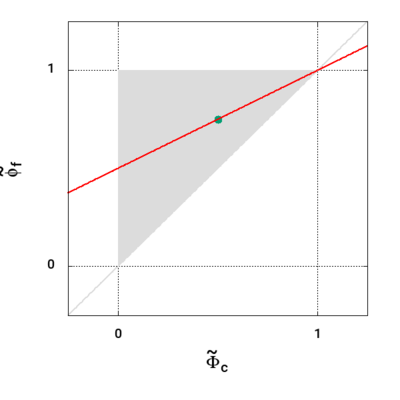fvSchemes
foamSearch $FOAM_TUTORIALS fvSchemes ddtSchemes.default
foamSearch $FOAM_TUTORIALS fvSchemes gradSchemes
foamSearch $FOAM_TUTORIALS fvSchemes "divSchemes.div(phi,U)"
foamSearch $FOAM_TUTORIALS fvSchemes laplacianSchemes.default
foamSearch $FOAM_TUTORIALS fvSchemes interpolationSchemes.default
foamSearch $FOAM_TUTORIALS fvSchemes snGradSchemes
tree $FOAM_SRC/finiteVolume/finiteVolume/ddtSchemes -L 1
tree $FOAM_SRC/finiteVolume/finiteVolume/gradSchemes -L 1
tree $FOAM_SRC/finiteVolume/finiteVolume/divSchemes -L 1
tree $FOAM_SRC/finiteVolume/finiteVolume/laplacianSchemes -L 1
tree $FOAM_SRC/finiteVolume/finiteVolume/snGradSchemes -L 1
Time schemes example
Time schemes define how a property is integrated as a function of time
ddtSchemes
{
default backward;
default Crank-Nicolson 0.9; //for most condition [0 ~ 1]
default Euler;
default CoEuler phi rho 0.5;;
default SLTS phi rho 0.5;;
default Local Euler;
default steadyState;
ddt(phi) <time scheme>;
}
// if divSchemes using "bounded"
// ddtSchemes should define "bounded"
// default bounded Euler;Backward time scheme
- Implicit
- Second order
- Transient
- Boundedness not guaranteed
- Conditionally stable
Crank-Nicolson time scheme
- Second order
- Transient
- Bounded
ddtSchemes
{
default CrankNicolson <coeff>
ddt(phi) CrankNicolson <coeff>;
}
// 0: Euler
// 1: Crank-Nicolson
// A value of 0.9 is a good compromise between accuracy and robustness
// CrankNicolson ocCoeff { type scale ; scale linearRamp ; duration 1 ; value 0.9 ; };Euler implicit time scheme
- Implicit
- First order
- Transient
Local Euler implicit/explicit time scheme
- First order
- Pseudo transient, designed for steady cases
- Spatially varying, cell-based time scale set by specific Local Time Stepping (LTS) solvers
Steady state time scheme
- Steady state
- Sets temporal derivative contributions to zero
Interpolation schemes
Interpolation schemes are used to transform cell-centre quantities to face centres. The operation is used in many of the finite volume calculations, e.g. for the calculation of gradient, divergence, and Laplacian terms.
interpolationSchemes
{
default none;
<equation term> <interpolation scheme>;
}Linear divergence scheme
- Second order
- Unbounded
- Good choice for LES calculations due to low dissipation
- For isotropic meshes

divSchemes
{
default none;
div(phi,U) Gauss linear;
div(phi,U) cubic; // DNS case
}Gradient schemes example
The gradient of a scalar property is represented using the notation:
gradSchemes
{
default none;
grad(p) <optional limiter> <gradient scheme> <interpolation scheme>;
}
// <limiters> cellLimited cellMDLimited faceLimited faceMDLimited clippedLinear
// <gradient scheme> fourth gauss leastSquares
// <interpolation scheme> linear pointLinear leastSquaresLaplacian schemes
Taking the Laplacian of a property is represented using the notation:
or as a combination of divergence and gradient operators
where is a diffusion coefficient.
laplacianSchemes
{
default none;
default Gauss linear;
default Gauss linear corrected;
default Gauss linear corrected;
default Gauss linear corrected;
laplacian(gamma,phi) Gauss <interpolation scheme> <snGrad scheme>
}Divergence schemes example
The divergence of a property Q describes the net rate at which it changes as a function of space, represented using the notation:
wallDist
{
method meshWave;
// Optional entry enabling the calculation
// of the normal-to-wall field
nRequired false;
// Optional entry delaying wall distance update to every n steps
// Default is 1 (update every step)
updateInterval 5;
}